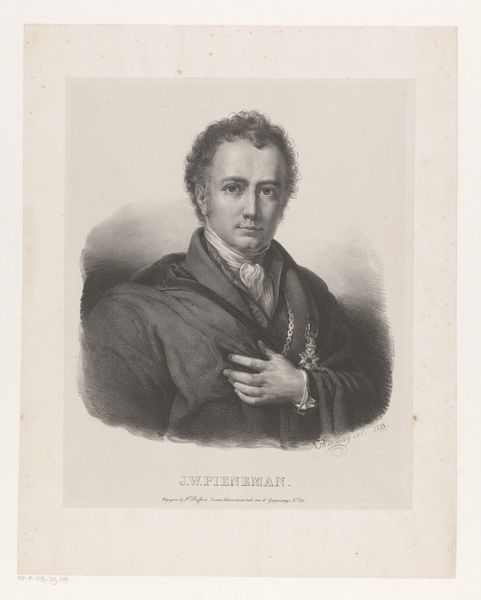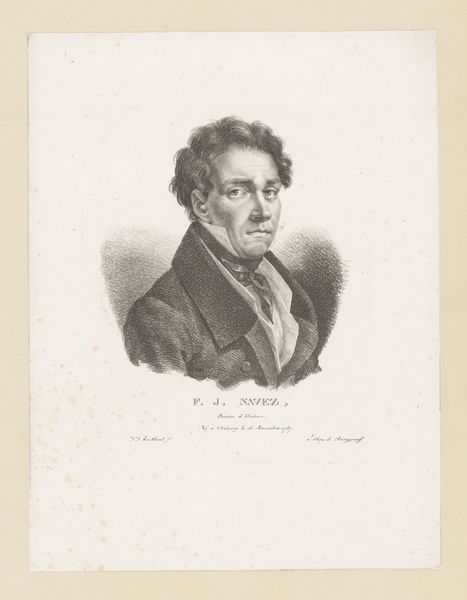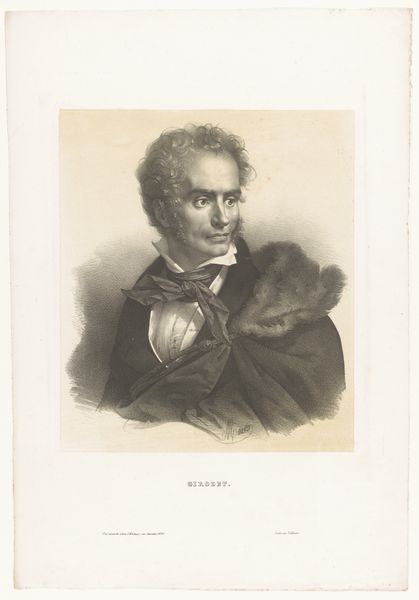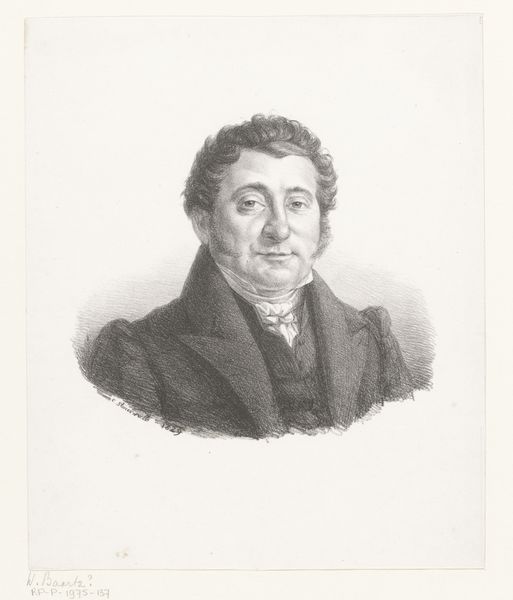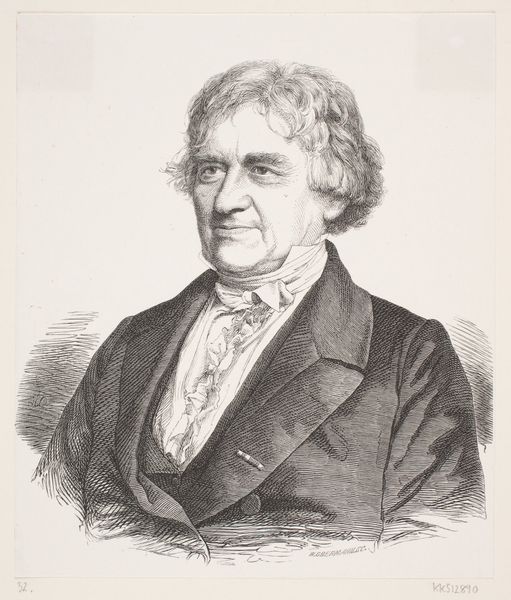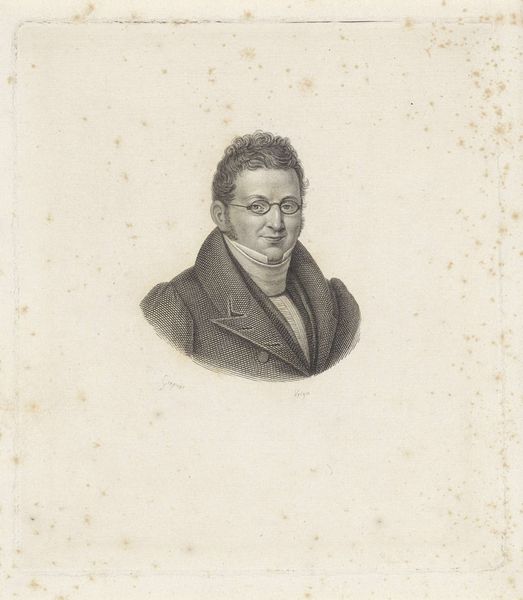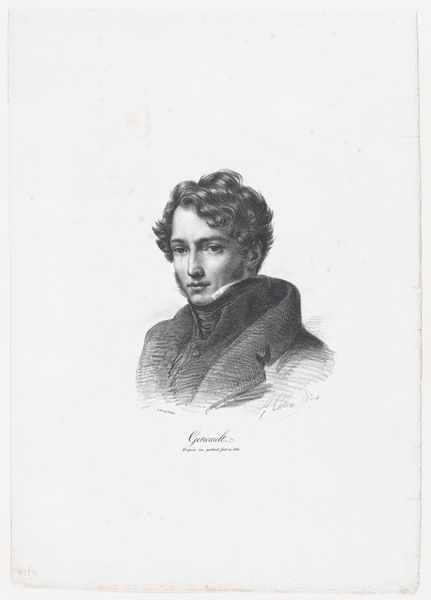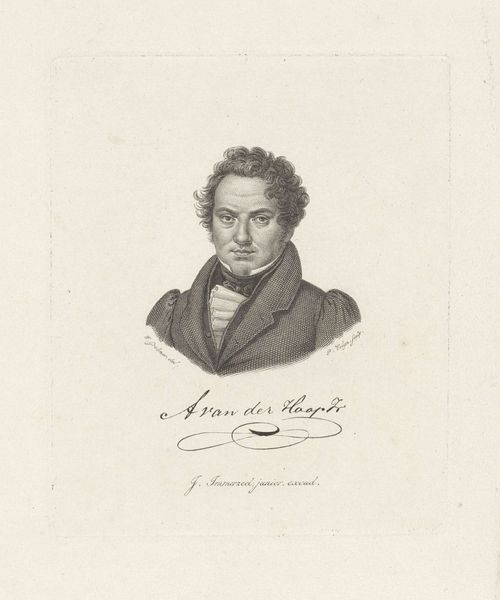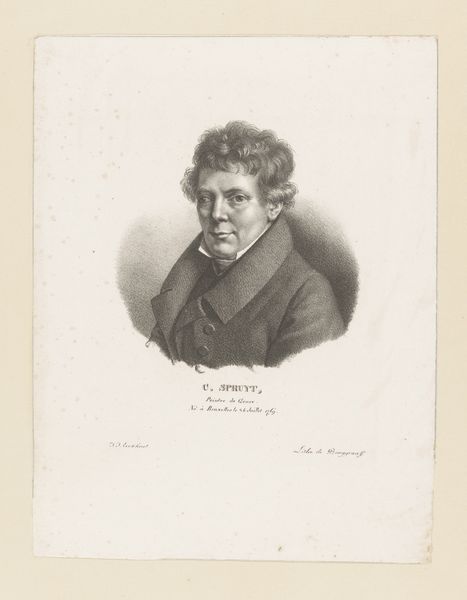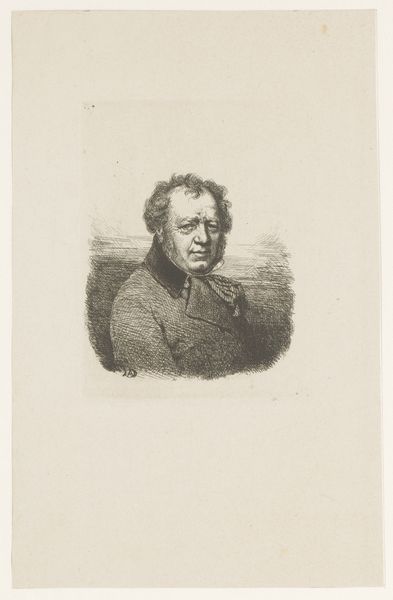
drawing, graphite
#
portrait
#
drawing
#
romanticism
#
graphite
#
portrait drawing
#
academic-art
#
fine art portrait
Dimensions: height 499 mm, width 343 mm
Copyright: Rijks Museum: Open Domain
Editor: So this is "Portret van Andreas Snoek," a graphite drawing created in 1829 by Nicolaas Pieneman. It's a striking image; the man's gaze is so direct. What really catches my eye is the coat draped so casually over his shoulders. How do you interpret this work? Curator: The drape of the coat, indeed, feels deliberate, doesn't it? In portraits of this era, clothing often functioned as a powerful symbol. Think of the Roman emperors, always depicted in specific togas that communicated power and authority. What kind of authority do you see communicated here, or is it perhaps a different type of message altogether? Editor: I'm not sure it's authority exactly, more like…self-possession? It’s Romantic era, after all. The way he’s looking off to the side makes him seem thoughtful. Is that part of the symbolism? Curator: Exactly. The slightly averted gaze, common in Romantic portraiture, suggests interiority, a rich inner life, an emphasis on feeling over action. Consider too, the exposed neck. In many cultures throughout history, the neck has represented vulnerability, yet also, perhaps paradoxically, a place of strength and communication. Do you see a contradiction between vulnerability and power represented here? Editor: That's interesting, I hadn't thought about it like that. It does give him a thoughtful, almost sensitive aura, not quite the sternness I expect from 19th-century portraits. He’s got this relaxed stance… Is there any connection with his historical context? Curator: Pieneman painted many portraits of significant figures of his era. It's conceivable that the sitter here held progressive or liberal views which might explain the almost bourgeois approach to portraiture, which diverges from traditional symbolism of aristocracy and monarchy. The gaze evokes humanism and personal identity through facial expression rather than through wealth and attire, yet the work doesn’t completely disregard traditional values or symbolisms either. What does this push-and-pull communication evoke for you? Editor: I see what you mean. There's a blend of traditional portraiture with a new emphasis on individuality. The man in the portrait almost seems to anticipate modern ideas about self-expression. Curator: Precisely! Looking at his coat versus the expression on his face opens so many avenues for the beholder to enter his own dialogue with the cultural memory, isn’t it? Editor: Absolutely! It makes you realize how much these seemingly simple portraits are packed with meaning!
Comments
No comments
Be the first to comment and join the conversation on the ultimate creative platform.
